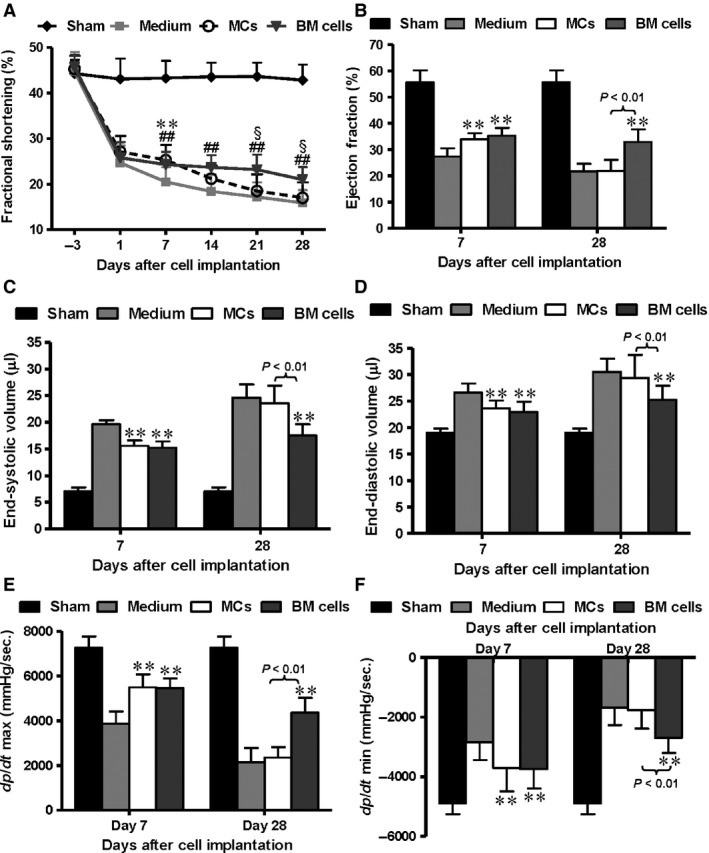Figure 4.

Mast cell (MC) transplantation transiently improved mouse cardiac function post‐myocardial infarction (MI). C57BL/6 mice underwent coronary ligation to induce MI, and wild‐type MCs, bone marrow (BM) cells or medium alone were injected into the myocardium. Sham‐operated mice underwent thoracotomy but no ligation. (A) All ligated groups exhibited a drastic decrease in fractional shortening at day 1 after MI assayed by echocardiography (n = 9). The MC and BM recipient groups both showed early improvement at day 7. These improvements were lost in the MC group but persisted up to day 28 in the BM group (**P < 0.01 for MCs versus medium alone; ##P < 0.01 for BM cells versus medium alone; §P < 0.05 for MCs versus BM). Pressure–volume analysis at day 7 and 28 after cell implantation was used to evaluate ejection fraction (B), end‐systolic and end‐diastolic volumes (C and D), and dP/dt max and dP/dt min (E and F, n = 9, **P < 0.01 versus medium alone). In all cases, the benefits of MC transplantation were apparent at day 7, but absent by day 28.
